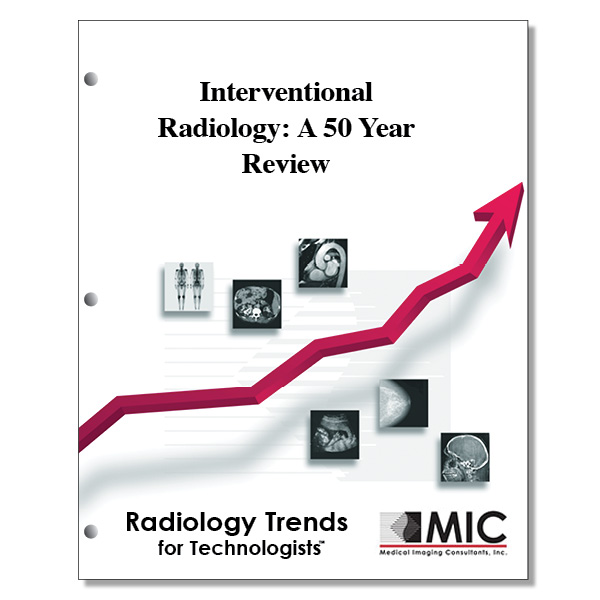

Interventional Radiology: A 50 Year Review
Major advances made in interventional radiology are described.
Course ID: Q00424 Category: Radiology Trends for Technologists Modalities: Cardiac Interventional, Vascular Interventional2.25 |
Satisfaction Guarantee |
$24.00
- Targeted CE
- Outline
- Objectives
Targeted CE per ARRT’s Discipline, Category, and Subcategory classification for enrollments starting after February 24, 2023:
[Note: Discipline-specific Targeted CE credits may be less than the total Category A credits approved for this course.]
Cardiac-Interventional Radiography: 0.75
Procedures: 0.75
Diagnostic and Electrophysiology Procedures: 0.50
Interventional Procedures: 0.25
Registered Radiologist Assistant: 1.00
Procedures: 1.00
Abdominal Section: 0.25
Neurological, Vascular, and Lymphatic Sections: 0.75
Vascular-Interventional Radiography: 1.25
Procedures: 1.25
Vascular Diagnostic Procedures: 0.50
Vascular Interventional Procedures: 0.25
Nonvascular Procedures: 0.50
Outline
- Introduction
- Patterns of Innovation
- The Early Years
- Treatment of Gastrointestinal Bleeding
- Percutaneous Transluminal Angioplasty
- Nonvascular Interventions
- Perfecting Tools
- Transjugular Intrahepatic Portosystemic Shunts
- Uterine Artery Embolization
- Stent Grafts
- Regional Cancer Therapies
- Summary
Objectives
Upon completion of this course, students will:
- understand the benefit of utilizing imaging in interventional radiology
- explain how innovation in interventional radiology occurs
- list advances that helped make procedures safer and tools more durable
- articulate the origin of interventional radiology
- list tools used for interventional radiography studies
- recognize what study is used to image the lymphatic system
- point out what study is used to pre-operatively identify active gastrointestinal bleeding
- verbalize the requirement for successful imaging of gastrointestinal bleeding
- understand the slang term “shadow gazer”
- define vasoconstrictor
- recognize cardiac side effects of large dose IV vasopressin
- know what types of bleeding angiographers treat
- describe puncture site complications associated with coaxial or dilating catheters
- know when polyvinyl chloride balloon catheters were introduced
- identify strategies for addressing shortcomings of percutaneous transluminal angioplasty
- recognize procedures performed by cardiologists
- list the reasons for percutaneous nephrostomy
- note the cause of intra-thoracic lung abscesses
- explain the imaging modalities used for percutaneous nephrostomy
- list tools for interventional imaging that became available in the late 20th century
- describe the technology that replaced screen-film imaging for interventional procedures
- state the critical components necessary to the survival of interventional radiology
- state the technology that is gradually replacing digital subtraction angiography
- understand what trans-jugular intrahepatic porto-systemic shunts are used for
- define Budd-Chiari syndrome
- describe how stent grafts became possible
- define a neovessel
- list the clinical uses for stent grafts
- select the proper treatment method for delivery of chemotherapy directly into a tumor
- describe cryoablation
